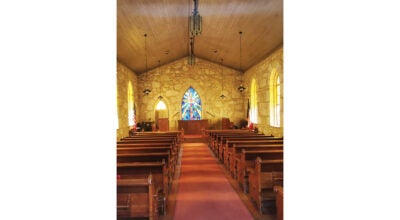911 dispatch trainees learn response roles
Published 5:00 am Friday, May 18, 2007
Being a 911 dispatcher involves a little more than justanswering the phone and sending responders to emergencies, as twolocal dispatch trainees are learning.
Mimi Smith, of Brookhaven, and Windy Davis, of Crystal Springs,have both been working for Lincoln County’s 911 dispatch for a fewmonths – Smith since September and Davis since January. But inrecent weeks, they’ve gotten to experience what it’s like on theresponse side of an emergency call.
Dispatch Supervisor Vicki McKnight said the hands-on training isimperative to the job because it gives the dispatcher a real-lifeidea of what is going on both with the callers and with theagencies being sent to the scene.
“The course is dramatic,” said McKnight. “I learned so much aboutwhat this is all about when I took it. It’s just training, but youlearn why everything works like it does.”
Smith and Davis have ridden with ambulance crews and sheriff’sdeputies for a day. On Thursday, they got to see what it’s like tobe a firefighter.
“We practiced with the dummy,” said Smith. “They showed us how theJaws of Life worked, and we had to wear these big heavy vests.”
Both women said the biggest surprise came in how physicallydemanding firefighters’ work can be.
“The Jaws of Life are really heavy,” said Smith, who is also an EMTand had seen them work before but had never actually handled them.”We couldn’t physically pick them up without help. It’s good to seethe things they work with and what they do behind the scenes.”
Davis agreed all the equipment is deceptively heavy.
“I almost fell over,” she said, referring to putting on thevest.
Brookhaven Fire Department Capt. Tony Weeks said that’s the reasonconditioning is such an important part of firefighting.
“You can pull a muscle really easily working with those things,” hesaid.
The two women, who are used to taking calls involving everythingfrom life and death situations to cats in trees and prank calls,said the physical challenges weren’t the only things that offered anew perspective after their series of ride-alongs.
Smith said on her ride-along, she had ridden with her fatherBateman Stilley.
“I thought that would mean there wouldn’t be too much going on,” hesaid. “Suddenly he was in the middle of a domestic dispute. Andhe’s not nervous at all, but I’m like, calling for backup.”
Davis said she could also see things from the angle of the calleras well.
“Now I think about it,” she said. “I know what can happen. I have abetter understanding of the people that call in.”
The ambulance ride-along taught them similar things, saidDavis.
“A lot of times you just don’t realize what’s going on out there,”she said.
The firefighters and dispatchers also had a question and answersession to swap information at the beginning of the day.
“It was good to put faces with voices,” said Smith. “We talk tothem all day.”
The questions focused on many different things on both sides, fromhow 911 will know who should cover the annexation areas to when tocall BFD to the scene of an accident.
“(The firefighters) said they’d rather get a call and get halfwaythere and turn around because they’re not needed than wait too lateto find out that they are,” said Smith. “Sometimes you feel bad ifyou call them out and there’s no reason, but they said that’s whatthey’re there for.”
Weeks said the session was just as informative for the firefightersas it was for the dispatchers.
“We asked things like how they work and how the computers work andhow they know who to call when a call comes in,” he said. “It’s funto have people come see what we have to work with.”





